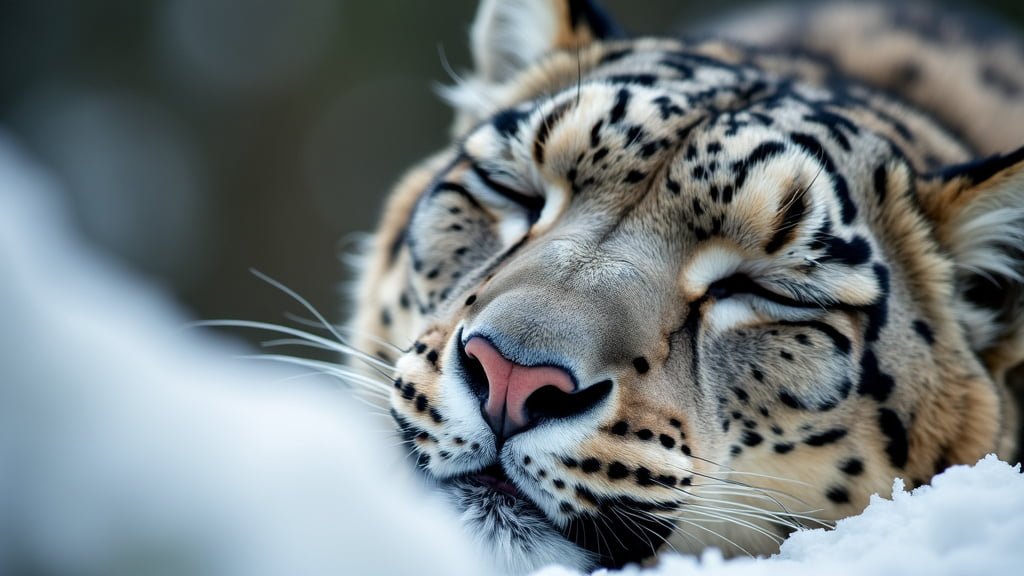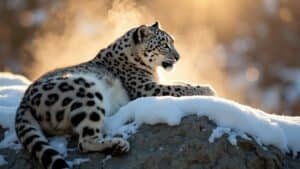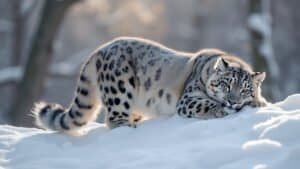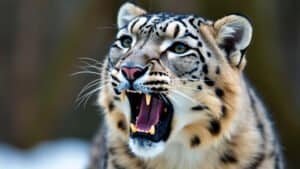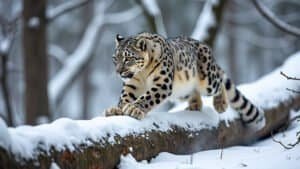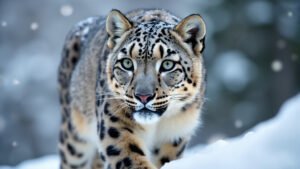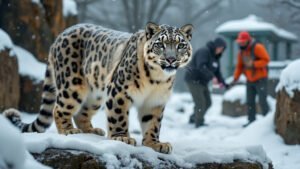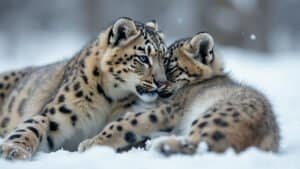Introduction
The International Union for Conservation of Nature (IUCN) plays a critical role in snow leopard conservation, coordinating global efforts to protect this vulnerable species. Through initiatives like the Global Snow Leopard and Ecosystem Protection Program, the IUCN collaborates with governments and other conservation organizations to safeguard habitats and monitor snow leopard populations
This article will explore the IUCN’s efforts to protect snow leopards, the significance of their Red List classification, and how scientific research and awareness campaigns contribute to the conservation of these elusive big cats
IUCN’s Key Initiatives for Snow Leopard Conservation
The IUCN has been pivotal in implementing conservation strategies for snow leopards, focusing on habitat preservation, research, and global cooperation
One of the key initiatives is the Global Snow Leopard and Ecosystem Protection Program (GSLEP), launched in 2013, which the IUCN helped to establish. The GSLEP brings together all 12 range countries where snow leopards live, aiming to conserve both the species and their ecosystems
This comprehensive initiative focuses on the interconnectedness of the snow leopard and its habitat, acknowledging that protecting ecosystems supports biodiversity and local communities alike
Through this program, the IUCN has supported various actions such as anti-poaching efforts, establishing protected areas, and fostering community-based conservation strategies. By encouraging local involvement, the IUCN ensures that conservation initiatives are sustainable and address human-wildlife conflict
For instance, the IUCN promotes eco-tourism and alternative livelihoods for local communities, reducing dependence on livestock, which often leads to conflict with snow leopards. This holistic approach not only protects snow leopards but also improves the livelihoods of people sharing the landscape with these predators
Role of the Global Snow Leopard Program
The Global Snow Leopard and Ecosystem Protection Program has been a cornerstone in unifying efforts across snow leopard range countries like Mongolia, India, and China
This international framework coordinates national governments, NGOs, and conservation experts, with the IUCN guiding best practices in ecological monitoring, habitat restoration, and population tracking
The GSLEP aims to secure at least 20 snow leopard landscapes by 2020, a target that emphasizes the large-scale nature of conservation needed to protect this wide-ranging species. The IUCN’s role as an advisor ensures that scientific rigor underpins every initiative
Collaborative Efforts with Governments
The IUCN has facilitated agreements between governments and conservation groups to implement national-level action plans. The IUCN’s collaborative nature allows for data-sharing and coordinated policy-making, ensuring that conservation strategies are standardized across borders
For example, through the IUCN-supported Global Snow Leopard Forum, held annually, range countries can assess progress and realign priorities. The IUCN’s influence helps drive political commitments, such as the declaration by the Kyrgyz Republic to double its protected snow leopard areas by 2025
Habitat Preservation and Community Involvement
Habitat degradation is one of the major threats to snow leopards, and the IUCN has been instrumental in habitat restoration efforts. The IUCN has facilitated landscape-level conservation strategies, incorporating the needs of local communities
Engaging pastoralists and farmers in conservation has been crucial, as snow leopards frequently come into conflict with livestock owners. The IUCN’s efforts to introduce compensation schemes for livestock losses, alongside promoting predator-friendly agricultural practices, help to mitigate this conflict
By focusing on integrating the conservation needs of both the snow leopard and local populations, the IUCN contributes to sustainable solutions that not only preserve ecosystems but also strengthen local economies through incentives like eco-tourism and conservation grants
Snow Leopard Red List Status and Its Impact
The IUCN’s Red List of Threatened Species serves as the world’s most comprehensive resource on the conservation status of various species, including the snow leopard. The IUCN currently lists the snow leopard as “Vulnerable,” a downgrade from its previous “Endangered” status in 2017
This change reflects conservation successes in some areas, but the species remains at high risk due to poaching, habitat loss, and declining prey populations. The Red List status plays a crucial role in shaping global and national conservation priorities, helping governments and organizations allocate resources where they are most needed
The Red List assessment is based on rigorous scientific data and population trends, and it directly influences policy-making, international agreements, and funding for conservation. By categorizing species like the snow leopard, the IUCN helps raise awareness among both governments and the general public about the urgency of conservation efforts
Criteria for Listing as Vulnerable
The IUCN Red List categorizes species based on specific criteria related to population size, rate of decline, geographic range, and the degree of threats
The snow leopard’s classification as “Vulnerable” means that although the population is not as critically endangered as before, it is still decreasing and faces significant threats that could lead to extinction without continued intervention
In its most recent assessment, the IUCN estimated the global snow leopard population to be between 4,000 and 6,500 individuals, but ongoing challenges such as illegal hunting and habitat fragmentation persist
The change from “Endangered” to “Vulnerable” was controversial in some conservation circles. Some experts feared that the downgrade might result in reduced conservation funding or attention. However, the IUCN emphasized that the “Vulnerable” status still requires substantial protective measures and highlights that the species remains under threat
Influence on Conservation Priorities
The snow leopard’s inclusion on the IUCN Red List serves as a call to action for governments and conservation groups
The classification draws attention to the species’ vulnerabilities, which then shapes international conservation policies like those outlined in the Convention on International Trade in Endangered Species of Wild Fauna and Flora (CITES)
As a result, stronger anti-poaching laws and habitat protection measures are often enacted, directly influenced by the Red List designation
The Red List status also attracts global funding. Conservation organizations and donors often use the Red List to prioritize which species or habitats to support. For snow leopards, this means that their vulnerable status helps secure financial and logistical support from global conservation funds, enabling research, monitoring, and protection programs to continue
Global Monitoring Efforts
The IUCN, through its Red List, plays a central role in coordinating global monitoring of snow leopard populations. This monitoring relies on scientific methods such as camera traps, genetic sampling, and satellite tracking
These efforts are crucial for providing updated data on population trends, migration patterns, and habitat use. The IUCN partners with local governments and research organizations to standardize data collection, ensuring consistent and reliable information
By keeping an up-to-date record of population trends, the IUCN helps to identify areas where snow leopards are most at risk, thereby guiding conservation strategies. Regular reassessments of the snow leopard’s status allow the IUCN to adjust its recommendations based on the latest research and conservation outcomes
IUCN’s Role in Raising Awareness
One of the most critical contributions of the IUCN to snow leopard conservation is its role in raising public awareness and fostering global attention on the species’ plight
Through campaigns, publications, and partnerships with media organizations, the IUCN has helped bring the conservation needs of snow leopards into the public eye. Increasing awareness of the threats facing snow leopards is key to garnering support from local communities, governments, and international bodies, ensuring that conservation efforts are prioritized and adequately funded
The IUCN’s communication efforts range from educational campaigns in range countries to global initiatives that encourage involvement from people around the world
These efforts not only highlight the beauty and ecological significance of snow leopards but also focus on the human impact and the need for sustainable solutions in mountain ecosystems where the species lives
Public Campaigns and Education
The IUCN has partnered with various NGOs and governments to launch public awareness campaigns targeted at both local communities and international audiences
For example, the IUCN has supported World Wildlife Day initiatives that have focused on snow leopards, raising awareness about their vulnerable status and the critical need for habitat conservation. Campaigns like these encourage global participation, with the IUCN promoting public understanding of how human activities—such as poaching, illegal trade, and habitat destruction—threaten snow leopard survival
In snow leopard range countries, the IUCN works closely with local governments and community leaders to spread awareness about the importance of the species to ecosystem health
Educational programs are launched in schools and local communities, highlighting the benefits of protecting snow leopards and offering strategies for mitigating human-wildlife conflict
Research and Scientific Data on Threats
The IUCN plays a major role in collecting and disseminating scientific data that informs both conservation actions and public campaigns
By publishing research on snow leopards’ habitat requirements, threats, and population dynamics, the IUCN ensures that both policymakers and the general public have access to accurate, up-to-date information. This research is essential in shaping conservation messaging, helping to counter misinformation and misconceptions about the species
For example, studies funded or endorsed by the IUCN, such as population surveys using camera traps, provide hard data on the number of snow leopards remaining in the wild. By highlighting the significant threats posed by climate change, shrinking prey populations, and poaching, the IUCN helps rally public support for conservation initiatives
Community Engagement in Range Countries
In regions where snow leopards are most vulnerable, the IUCN focuses on engaging local communities through direct participation in conservation
The organization collaborates with local NGOs to promote community-based conservation, which not only benefits snow leopards but also improves local livelihoods. This approach empowers communities to act as stewards of the land and wildlife, fostering a sense of ownership in the preservation of the species
By addressing human-wildlife conflict and promoting coexistence, the IUCN helps create a long-term commitment to snow leopard conservation. For instance, the IUCN has supported the development of predator-proof livestock enclosures and community-managed insurance programs to compensate for livestock losses caused by snow leopards
These initiatives reduce retaliatory killings of snow leopards, helping to ensure that local residents view the species as valuable rather than as a threat to their livelihoods
Collaborative Scientific Research by IUCN
Scientific research is fundamental to the IUCN’s approach to snow leopard conservation. The organization collaborates with a wide range of scientists, governments, and conservation organizations to conduct rigorous studies that inform policy and management decisions
By supporting research on snow leopard populations, genetics, and ecology, the IUCN ensures that conservation efforts are based on the latest and most accurate scientific data. These studies play a critical role in identifying the best strategies for protecting snow leopards and preserving their habitat
The IUCN’s scientific efforts include the development of standardized methodologies for population surveys and habitat assessments, as well as collaborations on genetic research to better understand the health and diversity of snow leopard populations
Population Studies and Tracking Methods
One of the most important contributions of the IUCN is its work in developing and supporting reliable methods for tracking snow leopard populations
Monitoring these elusive animals is challenging due to their remote, mountainous habitats, but the use of camera traps, satellite collars, and genetic sampling has significantly improved population assessments. The IUCN supports these techniques by funding projects and providing technical expertise, working closely with local wildlife agencies to conduct fieldwork
For instance, IUCN-supported research in countries like Nepal and Mongolia has employed camera traps to capture images of snow leopards in the wild, enabling scientists to estimate population sizes and densities with greater accuracy
Satellite collaring projects have also been conducted, allowing researchers to track the movement patterns of individual snow leopards over time, which is crucial for understanding their territorial ranges and migration routes
Genetic Research for Conservation
Genetic studies are increasingly important in conservation biology, and the IUCN has backed efforts to analyze the genetic diversity of snow leopard populations
Genetic diversity is key to the long-term survival of species, as it allows them to adapt to environmental changes and resist diseases. By studying the genetics of snow leopards, scientists can assess the health of populations, identify inbreeding risks, and understand how isolated populations might be connected
The IUCN has supported research that collects DNA samples from scat, fur, and other non-invasive sources to map genetic diversity across the snow leopard’s range. This research has helped identify potential corridors for genetic exchange between fragmented populations, guiding conservation actions to protect these critical habitats
Additionally, such studies provide insight into how snow leopards are related across different regions, which can inform cross-border conservation strategies
Role of the IUCN in Policy-making
The IUCN’s research efforts directly influence policy-making at both the national and international levels. By providing governments with scientifically sound data, the IUCN helps shape wildlife protection laws, poaching regulations, and habitat conservation strategies
The IUCN also plays a key advisory role in major international conservation agreements, such as the Convention on Biological Diversity and the Global Snow Leopard Forum, ensuring that snow leopard conservation is integrated into broader environmental policies
Scientific findings published or endorsed by the IUCN are often used to justify the creation of new protected areas, improve anti-poaching patrols, and develop land-use policies that benefit both snow leopards and local communities
For example, research conducted in collaboration with the IUCN has led to the establishment of wildlife corridors and protected zones that are critical for snow leopard survival, particularly in areas threatened by infrastructure development or mining
Conclusion
The International Union for Conservation of Nature (IUCN) plays a vital role in the conservation of snow leopards by guiding global efforts through strategic initiatives, scientific research, and public awareness campaigns
Its leadership in the Global Snow Leopard and Ecosystem Protection Program (GSLEP) has been instrumental in uniting range countries, local communities, and governments in collaborative conservation efforts
Additionally, the IUCN’s Red List designation of the snow leopard as “Vulnerable” remains a crucial tool in directing resources and shaping conservation policies
Through population monitoring, habitat preservation, and genetic research, the IUCN ensures that snow leopard conservation is grounded in scientific data. Moreover, its efforts to raise public awareness and engage local communities in conservation create a sustainable framework for long-term protection of this iconic species
The IUCN’s work continues to be essential for preserving both snow leopards and the fragile ecosystems they inhabit, ensuring that future generations will also have the opportunity to witness the majesty of these elusive big cats
